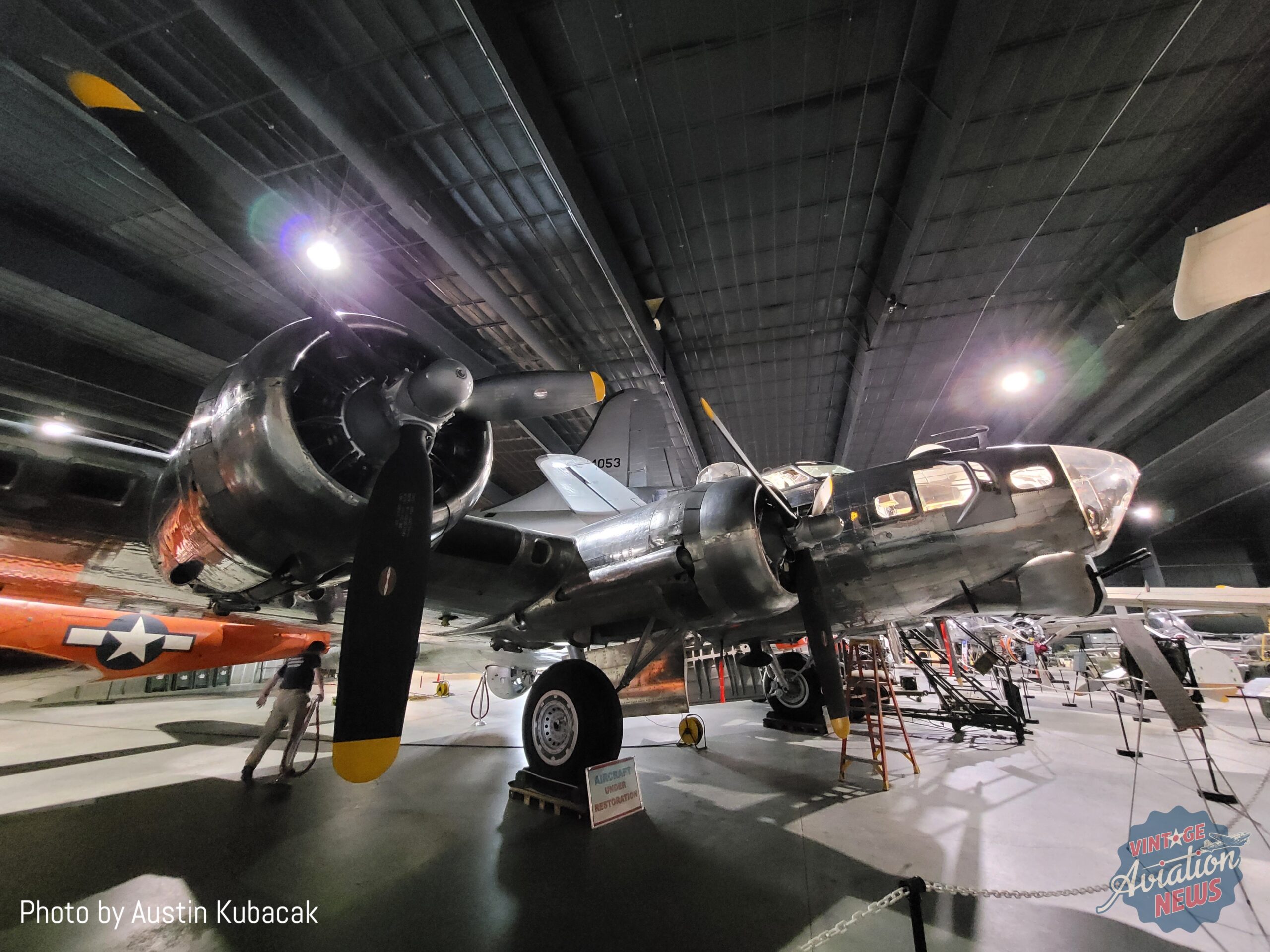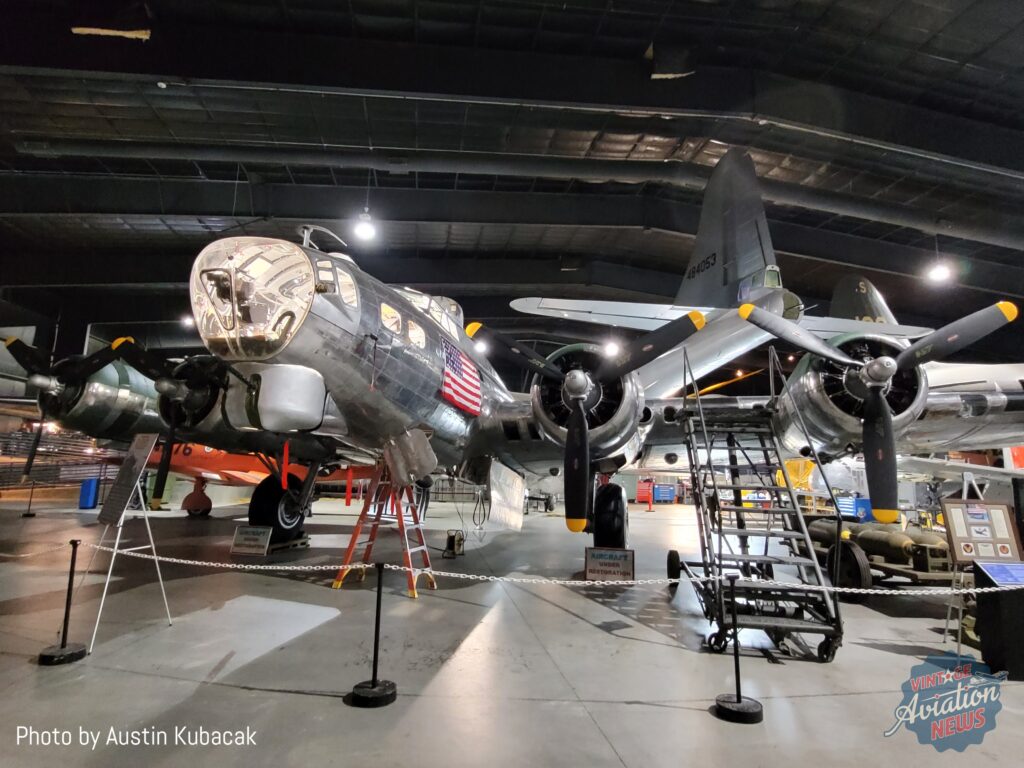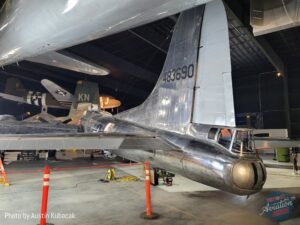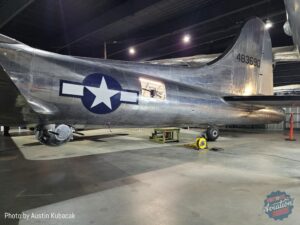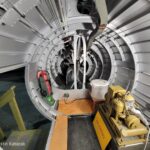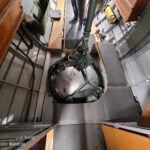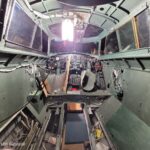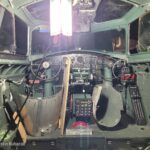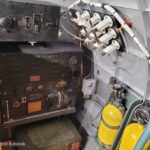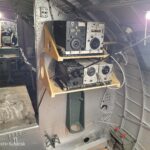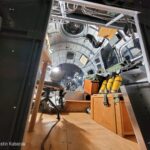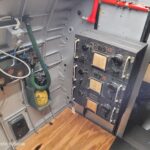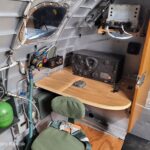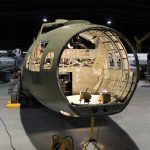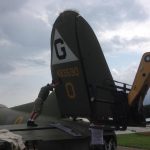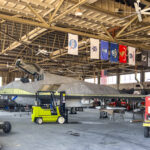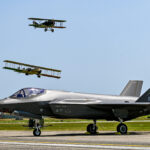by Austin Kubacak
It has been a few years since we last reported on the Museum of Aviation’s Boeing B-17G Flying Fortress (44-83690), which arrived at their facility in Warner Robins, Georgia back in August, 2015. This aircraft had spent the previous half century or so on outdoor display at Grissom Air Museum in Peru, Indiana before the National Museum of the US Air Force transferred it to Warner Robins. While the volunteers at Grissom had done their best to keep the Fort’ in good condition, the aircraft clearly needed significant attention following its long exposure to the elements and curiosity seekers.
The Museum of Aviation has spent the better part of the last eight years working on the B-17G. The steady progress has mounted up as the restoration team closes in on finishing what they refer to as “phase one” of the project. As the images reveal, the Fort’ has undergone a significant transformation. No longer the battered, corroded shell she once was, the aircraft’s gleaming exterior makes it appear almost ready for the flight line, such is the quality of the restoration team’s efforts. Their work, however, is far from complete…
As explained by Michael Woods, a museum restoration team volunteer who has worked on the B-17 since its arrival, “phase one” of restoration focused solely on reconstruction, preservation, and rehabilitation of the aircraft’s structure and exterior fittings. The lower portions of the B-17 suffered from extensive corrosion due to its fifty plus years on external display at Grissom AFB. Repairing this damaged required a lot of new sheet metal and parts fabrication, although some original components were sourced from other B-17s. Parts such as the bomb bay doors, under-wing and lower fuselage fuselage skins (and other structural fittings) had to be remade from scratch.
The restoration team has worked hard to restore the aircraft to the same condition it once enjoyed while in service with the U.S. Army Air Forces. While they have had to make some concessions to authenticity by replicating the chin and tail turret fairings in fiberglass, this is a common practice with the type since the original parts are virtually unavailable at any price and immensely expensive to replicate. Incredibly, the ball turret system hanging from the aircraft’s belly was entirely remanufactured in-house, aside from the turret itself. While not original to this specific B-17, the ball turret’s addition to 44-83690 was deemed necessary for its historical value despite having not been built with it. The U.S. Air Force primarily used this B-17G for drone flights during the nuclear bomb testing era in the 1950’s. To facilitate remote control during these drone flights, the aircraft fielded a trailing wire communications antenna, spooling out from beneath the aircraft during flight. To commemorate the important mission this B-17 once contributed to, antenna system has been restored to the B-17, and remains visible just behind the ball turret.
Another remarkable feature ‘hiding in plain sight’ involves the aircraft’s engines. When the Museum of Aviation received the B-17 in 2015, it came with its original engines which, understandably, were not in working order. Indeed, at some point in the aircraft’s past, someone had ordered them filled with cement to prevent their operation. Aging and the elements had also wreaked havoc on the engines. To showcase the amount of effort the museum has expended on the project, they currently have a display placing two of these same engine side-by-side; one of them being full-restored condition and the other in the same condition as when it arrived. The B-17 itself currently sports the engines once belonging to its infinitely more famous sibling, B-17F 41-24485 Memphis Belle. When the National Museum of the United States Air Force (NMUSAF) restored the ‘Belle, they replaced its engines with with a set of zero-timed Curtiss-Wright R-1820 engines already in store to expedite the process. The NMUSAF later transferred Memphis Belle’s old engines to the Museum of Aviation for use in 44-83690. Surprisingly, not only do the props still turn on these engines, but the associated turbochargers are also capable of rotating as well.
Phase One has involved eight years of enormous effort to rebuild the aircraft structurally and complete the aircraft’s exterior. With that aspect approaching completion, Phase Two will soon begin; this will involve refurbishing the aircraft’s interior. I was given the opportunity to venture inside the aircraft to have a look at the work already expended on this part of the project, and I was astounded by the quality of this endeavor. The duct work, the control cables, floorboards, radio room, and machine gunner positions are all in great condition and almost look like they are ready to use at a moment’s notice. The cockpit, on the other hand, still requires substantial rework, along with the dorsal and central fuselage turrets. Despite these areas remaining largely hidden to visitors, it is still important to restore them to a condition as original as possible/practical.
Initially, the overall restoration program was budgeted at around $400,000 but, unsurprisingly, given the aircraft’s poor condition, the actual cost is presently approaching $800,000, and may ultimately breach $1,000,000 by project’s end. While the museum is part of the National Museum of the U.S. Air Force system, its funding source comes overwhelmingly from private donations, which makes maintaining such an intensive restoration program a considerable challenge – so every dollar counts. When this B-17 is ready for display in the next year or so, it will be a magnificent representative of the breed, and well worth the amount of time, energy and treasure invested in it. To help support the Museum of Aviation’s effort to complete this important project, please do visit the link below…







